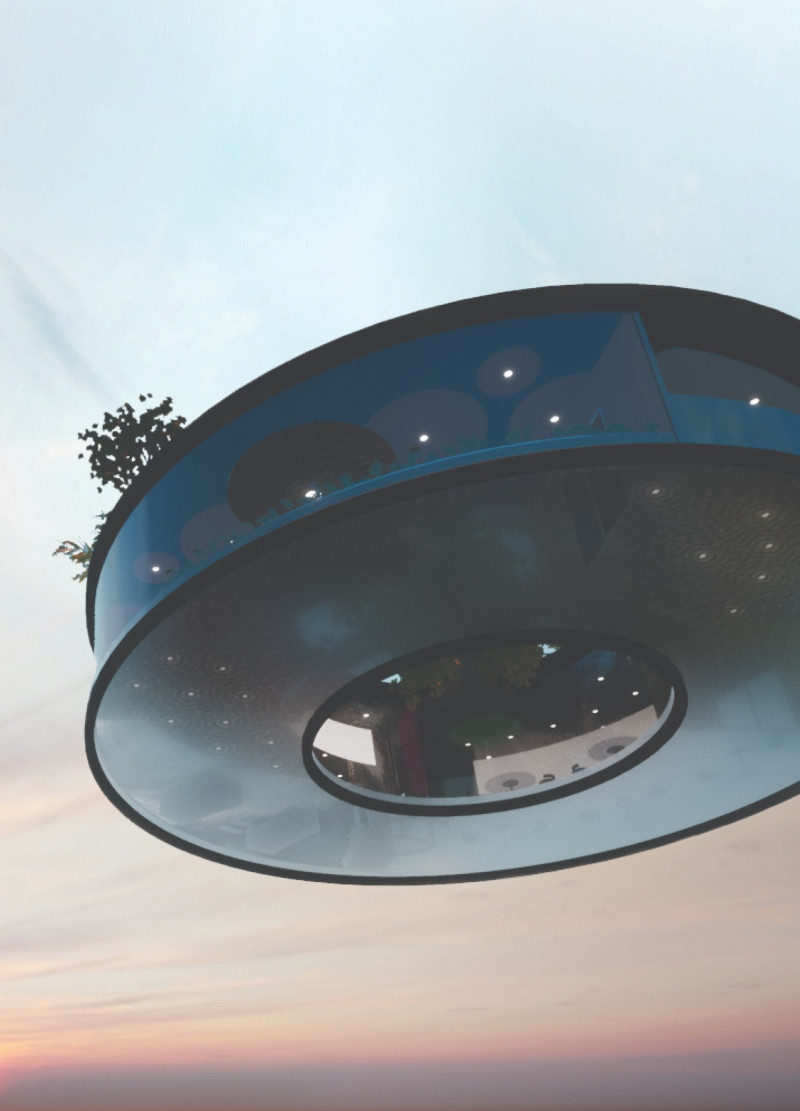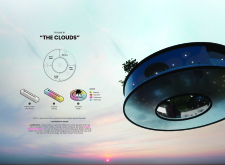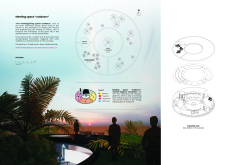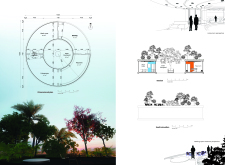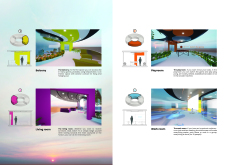5 key facts about this project
Central to the project is the concept of living in clouds, which reflects aspirations for connectivity and creativity. The design includes distinct zones: a workroom, living room, playroom, balcony, and inner courtyard. Each space serves a specific function while contributing to an overarching theme of community and creativity. The design synthesizes natural light and panoramic views, integrating the interior with the external environment, thus enriching the user experience.
Integrated Technology and Unique Spatial Relationships
What distinguishes the "House in the Clouds" from other architectural projects is its commitment to integrating technology with spatial design. The use of virtual reality within the living spaces allows inhabitants to interact with their environment dynamically, enhancing the sense of immersion. This forward-thinking approach to architecture prioritizes user experience and adaptability, ensuring that the space evolves as the needs of its occupants change.
The circular, open design fosters seamless circulation, minimizing barriers and promoting interaction among different areas. The incorporation of an elevator platform serves not only as a means of vertical mobility but also as a conceptual extension of elevating the living experience. This attention to creating a cohesive flow reflects a thorough understanding of modern living dynamics, where flexibility and openness are paramount.
The Role of Nature in Architectural Design
The "House in the Clouds" also emphasizes the importance of nature in architectural design. Features such as the inner courtyard and balcony are strategically placed to promote connection with the outdoors, creating serene spaces for relaxation and reflection. These areas are designed to enhance mental well-being while allowing for physical interaction with the natural world, reinforcing the project's intention to create a balanced living environment.
The materials chosen for this project are likely to contribute to its innovative design. The anticipated use of glass allows for extensive views and natural light, while steel and aluminum add structural integrity. The potential inclusion of smart materials enhances the building's interactivity, aligning with the underlying theme of technological integration.
In summary, the "House in the Clouds" offers a comprehensive exploration of modern architectural design that merges technology, community engagement, and a connection with nature. For further insights, explore the architectural plans, sections, and designs detailed in the project presentation, which illustrate the innovative ideas and unique approaches that define this architectural endeavor.


